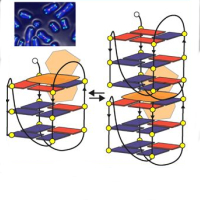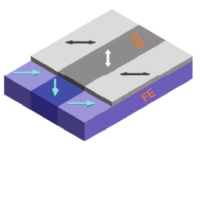Transition from Hydrodynamic to Viscoelastic Propagation of Sound in Molten RbBr
The departure from the hydrodynamic regime in liquids is subject of a continuous research in order to provide an experimental support to liquid state theories, which are much are harder to develop respect to the crystal and gas counterpart. We have used the neutron spectrometer BRISP@ILL to apply the neutron scattering Brillouin technique to molten RbBr at THz frequencies and nm length scale.
The experimental longitudinal current spectra clearly show their dispersive nature. The “acoustic-like” dispersion curve displays a large positive dispersion effect thus marking a clear departure from the hydrodynamic behavior at Q=0.2 Å-1 and at energies comparable to the inverse of the structural relaxation time. This observation represents a strong experimental evidence of the transition from a hydrodynamic to viscoelastic regime in a molten liquid.

The experimental dispersion curve obtained form experimental dynamical structure factor and longitudinal current (shown in the inset) are shown, and compared with the calcuated values and the adiabatic sound velocity.
F. Demmel, D. Szubrin, W.C. Pilgrim, A. De Francesco, and F. Formisano, Transition from Hydrodynamic to Viscoelastic Propagation of Sound in Molten RbBr, Phys. Rev. E 92, 012307 (2015). Article selected by the editors as an Editors' Suggestion.








